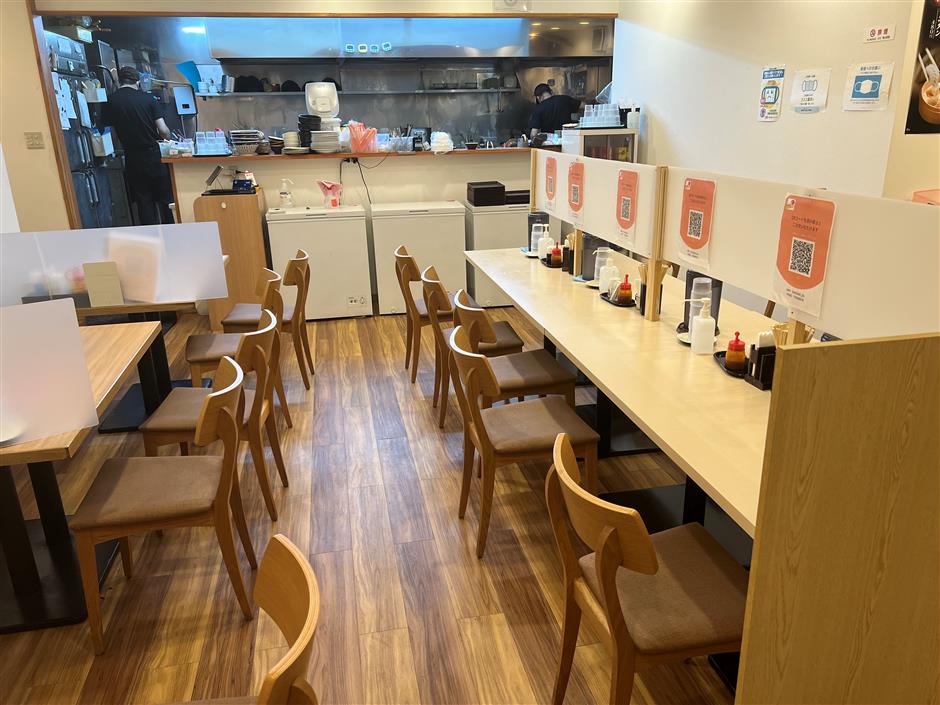The taste of success: Heritage snacks of Shaxian delight foodies worldwide
In the early 1980s, Yubang village in the southeastern coastal province of Fujian was impoverished, with farmers barely eking out a living from the land. So how did this unobtrusive village become the birthplace of a thriving international snack business?
The turn in fortunes began in the late 1980s, when agricultural reforms created surplus rural labor, with many migrating to cities and taking their local culinary heritage with them.
Villagers from Yubang village in the district of Shaxian turned to mom-and-pop snack stalls to make ends meet, and many fanned out to other cities in Fujian, peddling a China food heritage that has come to be called Shaxian delicacies.

Lotus flowers in full bloom in a pond near the entrance to the village point to one ingredient used in making the snacks.

The giant tree, said to be 1,016 years old, is a hallmark of the village.
The district, which takes its name from the Sha River and is now part of the city of Sanming, boasts dishes of noodles, wonton and dumplings that have captivated foodies not only in China but across the globe.
In 1997, the government supported the expansion of Shaxian delicacies beyond Fujian. The snacks became a hit in the Pearl River Delta, eventually expanding to the Yangtze Delta, Beijing and beyond.
In 2000, when he was deputy Party Secretary of Fujian Province, now President Xi Jinping visited Shaxian and said the area's snacks had a bright future and should be further developed.
And developed they have. The once local snacks form the foundation of the Shaxian Snacks eateries, now ubiquitous on the streets of Shanghai.

Snacks available in the village, numbering over 30, are more diverse than the items commonly found on the Shaxian Snacks menu.
On a recent press tour of Shaxian, we visited Yubang village, nestled on the side of a verdant mountain, with a population of about 1,200.
Lu Huimu, a Shaxian native who chairs the township People's Congress, explained the sequence of events to lead to the snacks attaining nationwide and global stardom.
Shaxian Snacks specializes in zhengjiao (steamed dumpling), bianrou (wonton with condensed pork filling), banmian (noodles served with soya sauce), and dunguan (potted soup).

Mao Weiming, a native of Shaxian, has launched two shops in the vicinity of Tokyo.

The interior of one of Mao Weiming's restaurants in Japan.
The simple fare drew on an abundance of raw materials in the area.
"People here were known for their originality in devising all sorts of festivals, sometimes just to find an excuse to indulge themselves," Lu said. "For instance, when the new rice crop was harvested, villager women would make thin rice sheets from the juice of ground rice, and it became a delicacy."
Shaxian Snacks originated from mom-and-pop eateries that operated on the principle of high turnover, low profits. It is a collective brand, under which thousands of small eateries operate independently but offer similar menus, service and price range.
While the menu in a Shaxian Snacks restaurant is, as a rule, limited by operational costs, Lu said more diversity will come with standardized franchises. He cited one example. The brand will open a flagship shop in Shanghai in October, to be operated by Zuiyoucai Food Co, which also produces processed or semi-processed foodstuffs to supply Shaxian Snacks. A similar franchise is operated by Nanshanpo.

This newly branded Shaxian Snacks shop front would be seen in the franchises, including the flagship restaurant to be opened in Shanghai's Yangpu District.
Today on the food platform Meituan, there are a staggering 88,000 registered Shaxian Snacks eateries. And the brand has expanded to include 174 outlets in 66 countries and regions.
A training center has been set up in Shaxian to teach courses to people wanting to start their own snack businesses, while maintaining authenticity.
In a telephone interview, Shaxian native Mao Weiming, 32, who operates two Shaxian Snacks outlets near Tokyo, said he realized the potential of his hometown delicacies when he went to study in Japan.
"My parents used to operate a snacks shop, and I missed the food of my hometown, so I started an outlet here in 2018," Mao said.
Mao said that he returned home in late April to explore the potentials of importing some local foodstuffs to Japan, including a special sauce from Zuiyoucai. It may take some time to arrange, but he said he thinks it will add authenticity to the menu.















